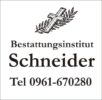Problems in film and television
Multiple aspect ratios create additional burdens on filmmakers and consumers, and confusion among TV broadcasters. It is common for a widescreen film to be presented in an altered format (cropped, letterboxed or expanded beyond the original aspect ratio). It is also not uncommon for windowboxing to occur (when letterbox and pillarbox happen simultaneously). For instance, a 16:9 broadcast could embed a 4:3 commercial within the 16:9 image area. A viewer watching on a standard 4:3 (non-widescreen) television would see a 4:3 image of the commercial with 2 sets of black stripes, vertical and horizontal (windowboxing or the postage stamp effect). A similar scenario may also occur for a widescreen set owner when viewing 16:9 material embedded in a 4:3 frame, and then watching that in 16:9. Active Format Description is a mechanism used in digital broadcasting to avoid this problem. It is also common that a 4:3 image is stretched horizontally to fit a 16:9 screen to avoid pillar boxing but distorts the image so subjects appear short and fat.
Both PAL and NTSC have provision for some data pulses contained within the video signal used to signal the aspect ratio (See ITU-R BT.1119-1 – Widescreen signaling for broadcasting). These pulses are detected by television sets that have widescreen displays and cause the television to automatically switch to 16:9 display mode. When 4:3 material is included (such as the aforementioned commercial), the television switches to a 4:3 display mode to correctly display the material. Where a video signal is transmitted via a European SCART connection, one of the status lines is used to signal 16:9 material as well.








